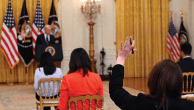With the war hovering over the American conversation and upcoming elections, what was the portrait from Iraq? How much of it depicted the surge and U.S. policy generally as not working? How did it assess the Iraqi government’s future? Or the stability of the country more generally? What about U.S. troop morale or the Iraqi view of U.S. troops?On balance, the picture Americans received was one of instability and attacks. But much of that came not from how the stories were portrayed but from the events themselves that made it into the news.
The largest share of stories, nearly half (47%) of all the stories studied, focused on violence or violent incidents, but did not offer any larger analysis about what those events imply about U.S. policy, the stability of the country or any other larger metric of the war.
Another 16% of all stories studied offered explicit assessments of the war that were pessimistic.
Eight percent of the stories were balanced in their assessment, while 5% were optimistic. Thus, of all the stories that offered a clear assessment, just over half (56%) were pessimistic.
And about one in five stories, 21%, conveyed a host of other messages that were not directly assessing the direction of the war. The bulk of these stories were about three concerns: the conduct of private contractors, the daily lives of U.S. soldiers, and Iraqi internal affairs such as waste and abuse in the reconstruction of the country. Finally, 4% were just-the-facts accounts of daily events that were non-violent.




